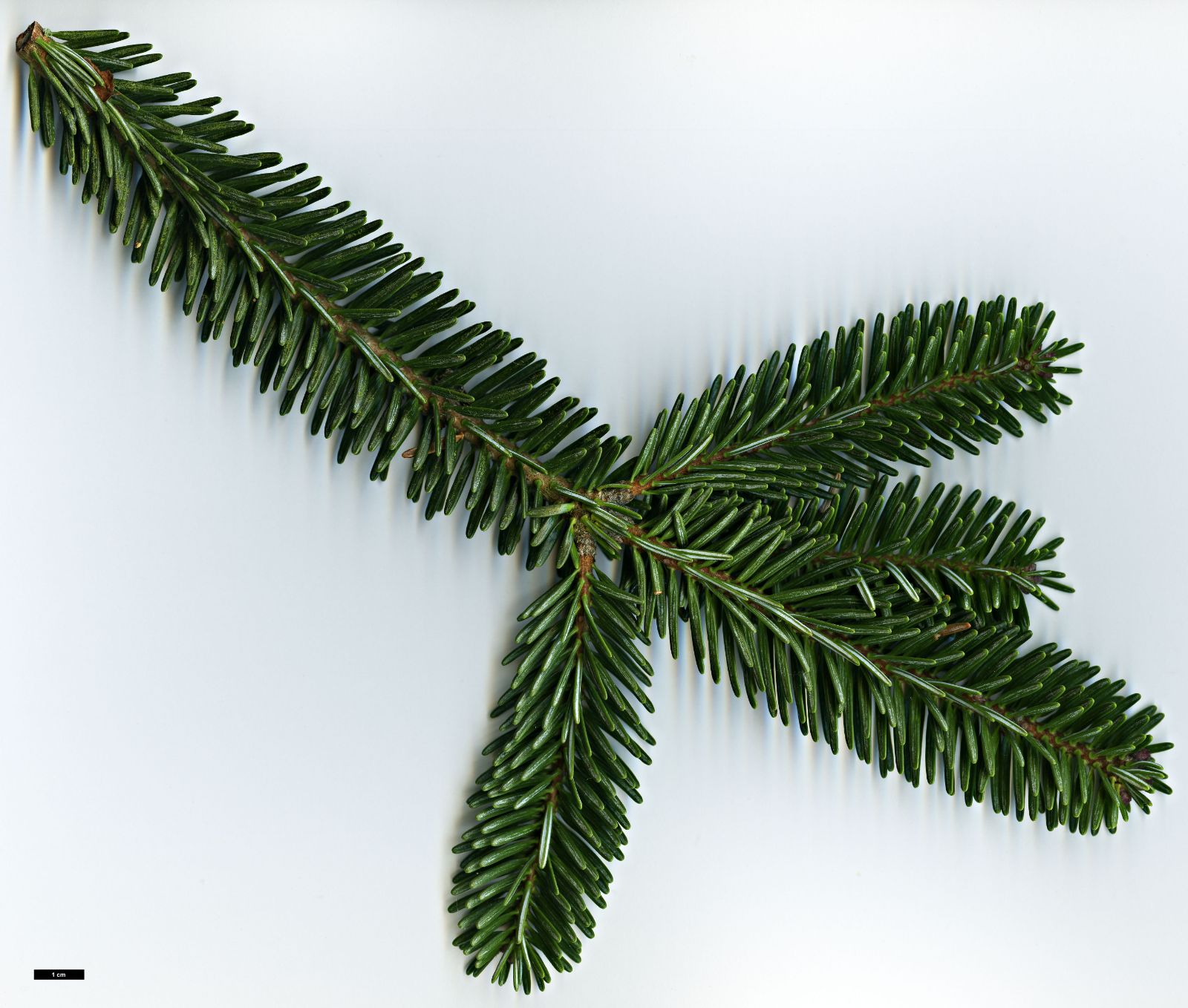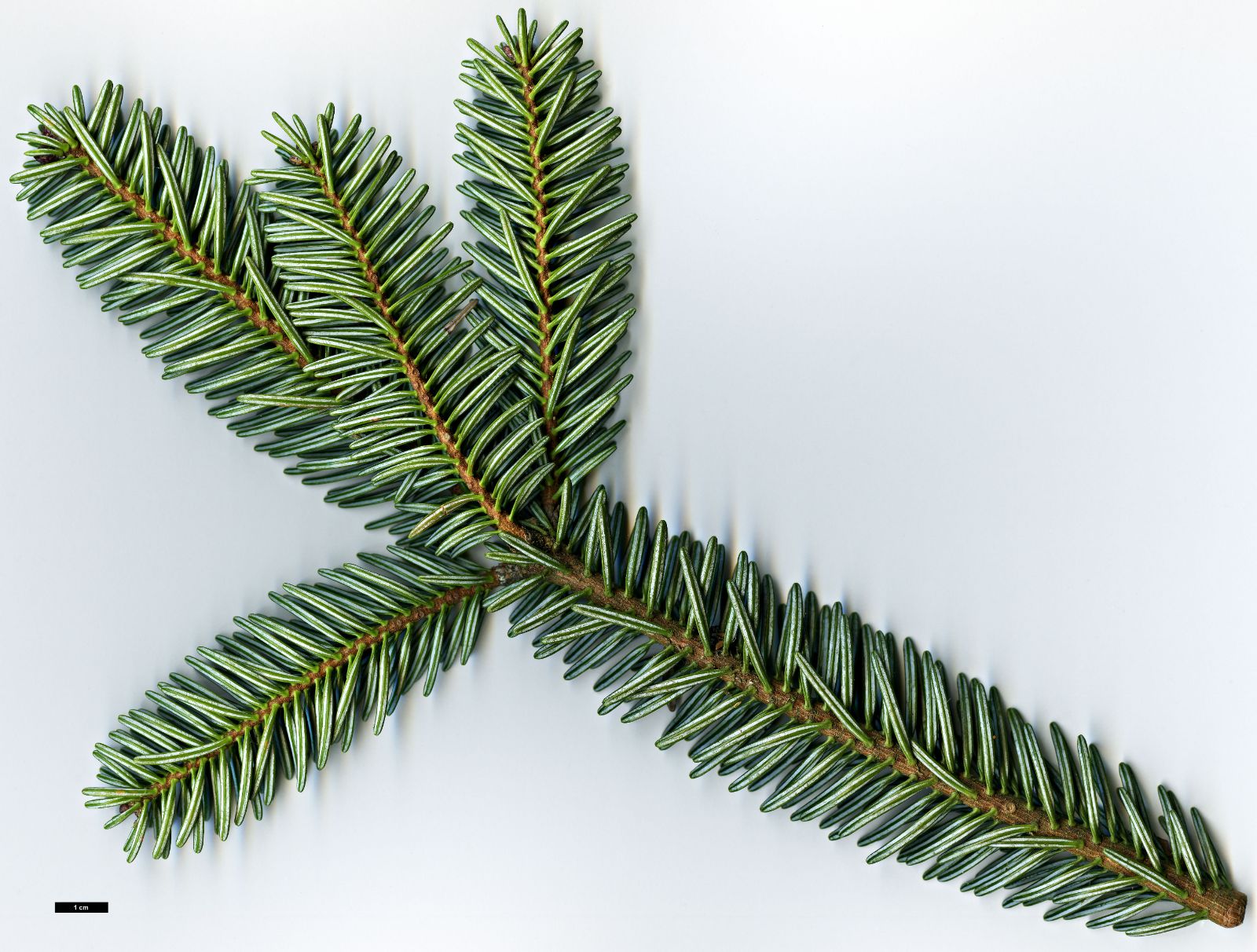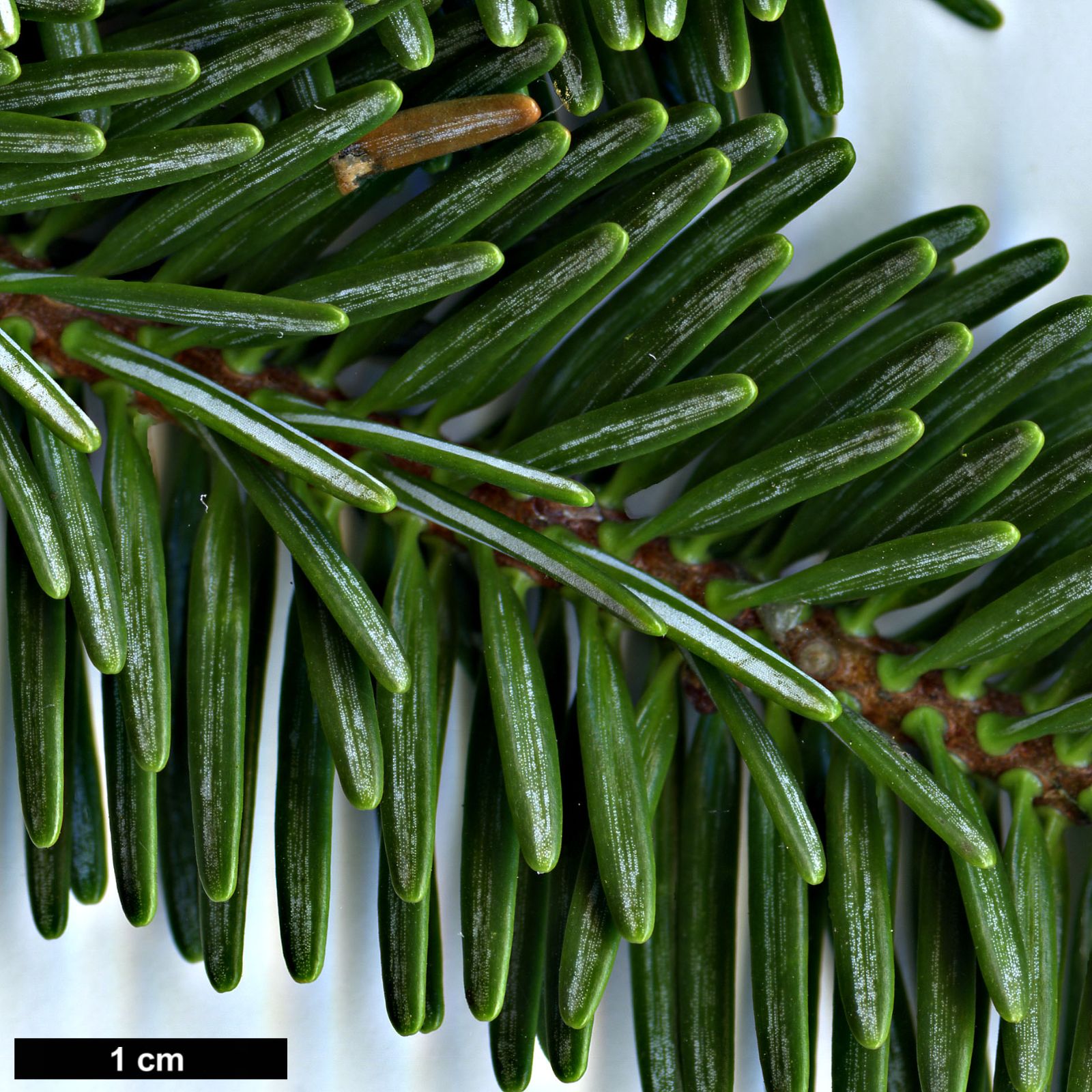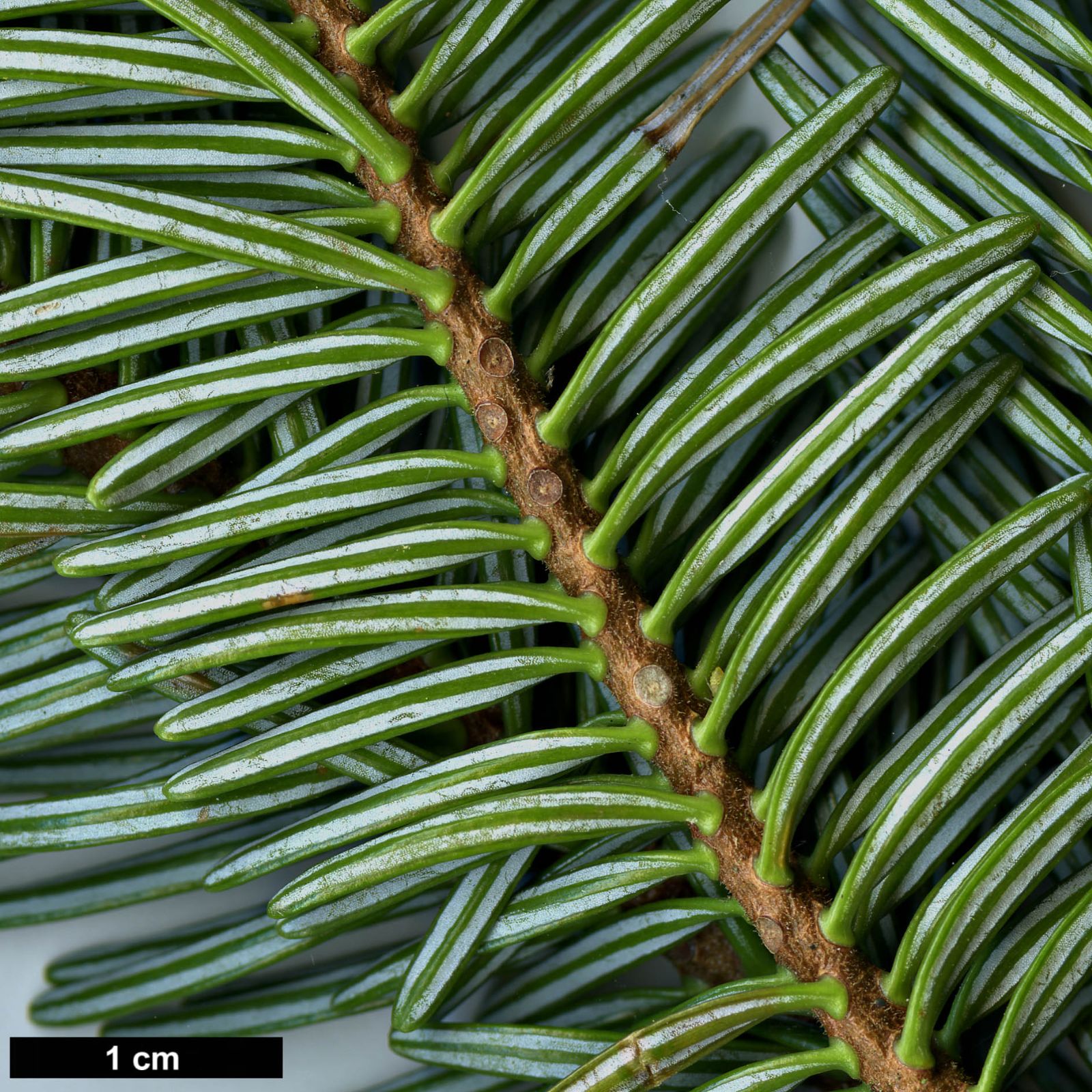Abies × insignis
Sponsor
Kindly sponsored by
Sir Henry Angest
Credits
Tom Christian (2021)
Recommended citation
Christian, T. (2021), 'Abies × insignis' from the website Trees and Shrubs Online (treesandshrubsonline.
Genus
- Abies
- A. nordmanniana × A. pinsapo
Synonyms
- Abies insignis var. speciosa (Bailly) Rehder
Infraspecifics
Other taxa in genus
- Abies alba
- Abies amabilis
- Abies × arnoldiana
- Abies balsamea
- Abies beshanzuensis
- Abies borisii-regis
- Abies bracteata
- Abies cephalonica
- Abies × chengii
- Abies chensiensis
- Abies cilicica
- Abies colimensis
- Abies concolor
- Abies delavayi
- Abies densa
- Abies durangensis
- Abies ernestii
- Abies fabri
- Abies fanjingshanensis
- Abies fansipanensis
- Abies fargesii
- Abies ferreana
- Abies firma
- Abies flinckii
- Abies fordei
- Abies forrestii
- Abies forrestii agg. × homolepis
- Abies fraseri
- Abies gamblei
- Abies georgei
- Abies gracilis
- Abies grandis
- Abies guatemalensis
- Abies hickelii
- Abies holophylla
- Abies homolepis
- Abies in Mexico and Mesoamerica
- Abies in the Sino-Himalaya
- Abies kawakamii
- Abies koreana
- Abies koreana Hybrids
- Abies lasiocarpa
- Abies magnifica
- Abies mariesii
- Abies nebrodensis
- Abies nephrolepis
- Abies nordmanniana
- Abies nukiangensis
- Abies numidica
- Abies pindrow
- Abies pinsapo
- Abies procera
- Abies recurvata
- Abies religiosa
- Abies sachalinensis
- Abies salouenensis
- Abies sibirica
- Abies spectabilis
- Abies squamata
- Abies × umbellata
- Abies veitchii
- Abies vejarii
- Abies × vilmorinii
- Abies yuanbaoshanensis
- Abies ziyuanensis
Tree to 30 m, especially vigorous in youth, crown conical to broad-pyramidal, very regular. Bark maturing to whitish-grey, often fissured in old trees. Branches spreading. Branchlets shining reddish-brown, grooved, initially black-pubescent especially in grooves, soon glabrous. Vegetative buds ovoid-conical, somewhat resinous. Leaves densely set, especially so above the shoot, more or less pectinate beneath or at least parted to form a ‘V’, (1–)2–3 cm × 1.5–3 mm, broadest in the upper half, tapering toward the twisted base, apex obtuse, rarely acute or emarginate or truncate, bright glossy green above with a few stomatal lines toward the apex, two whitish stomatal bands beneath parted by a green midrib. Seed cones like those of A. pinsapo, greenish at first, maturing brown, 11–20 × 3.5–5 cm, scales swollen and irregular in form, bracts usually very slightly exserted, rarely fully included. (Liu 1971; Krüssmann 1985).
Raised c. 1850 in the Renault nursery, Bulguéville, France, an open-polinated plant of A. pinsapo being the seed parent. Initially this hybrid fir was thought to be the result of graft hybridisation, for the seed parent was a scion of A. pinsapo that had been grafted on A. alba, and it was presumed – roughly translated into general terms – that some sort of genetic exchange had taken place. Of course this was not the case; rather a nearby plant of A. nordmanniana pollinated the grafted A. pinsapo, but the unhelpful myth was still being perpetuated in lierature well into the early twentieth century (Elwes & Henry 1906–1913; Krüssmann 1985).
The cross was made again, though with the seed and pollen parents reversed, at Aulnay, Sceaux, France, in 1871 or 1872, and named A. insignis var. speciosa (Bailly) Rehder. Several cultivars were described in the early 1900s but it is not clear how, it at all, they differ from the typical form. Only ‘Pendula’, described later, seems convincingly distinct (Liu 1971).
A. × insignis is one of the rarer hybrid firs. The only plant recorded from the UK and Ireland by The Tree Register is one at the Sir Harold Hillier Gardens, Hampshire, which was planted in 1989 and by 2018 measured 8.7 m × 0.53 m dbh (Tree Register 2020). Edwards & Marshall (2019) describe it as ‘A vigorous, large, conical tree, the foliage appearing blue-green from a distance’.
'Pendula'
Described by Franco in 1950, differing from the type in its ‘long and pendulous branches nearly adpressed to the stem’ (Krüssmann 1985b). Krüssmann lists several other cultivars, all raised at Versailles in 1878, which seem to reflect the variation one would expect in a hybrid, with some leaning closer to one parent than to the other. These include:
- ‘Andreana’
- ‘Beissneriana’
- ‘Kentiana’
- ‘Mastersiana’
It is highly doubtful that any are still grown, and even ‘Pendula’, the only form that is obviously distinct and worthy of a name, may now be lost.




